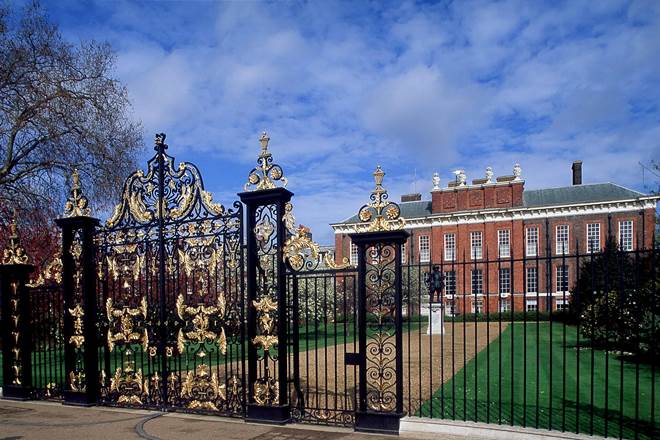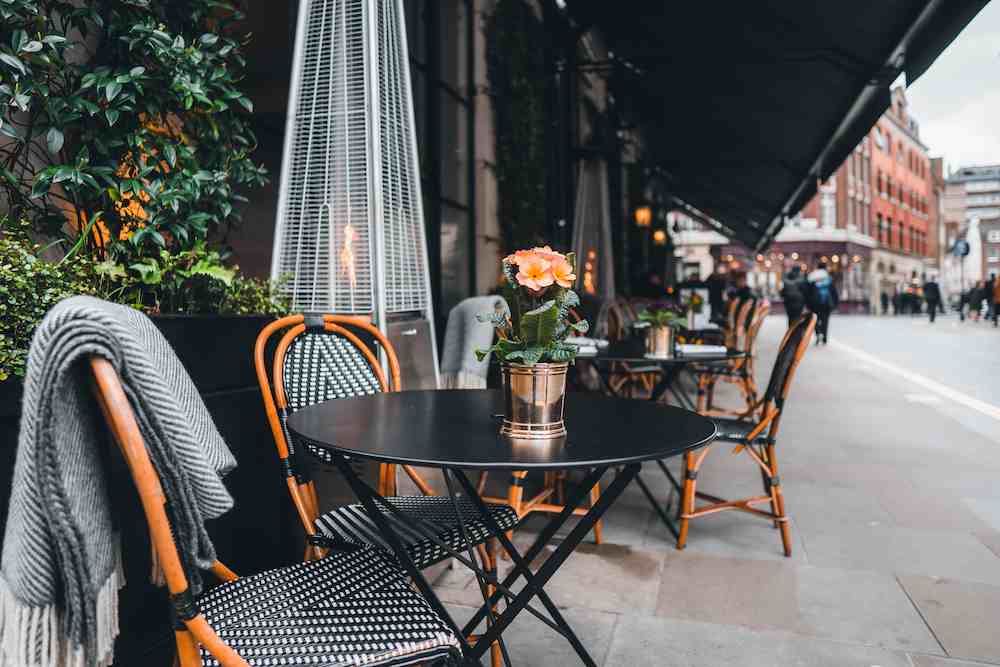When you think of London sightseeing, the royals probably spring to mind. In London, you’ll find eight royal parks, along with the many royal residences, including Kensington Gardens and Palace.
What’s in this guide?
- What to see at Kensington Gardens and Palace
- History and facts
- Nearby restaurants, bars and shops
- Opening times and ticket prices
Getting to Kensington Gardens and Palace
There are plenty of tube stations within walking distance of Kensington Gardens and Palace. The two nearest stations are High Street Kensington for the District (green), Circle (yellow) and Piccadilly (dark blue) lines, and Queensway for the Central (red) line.
Paddington station is also just a 20-minute walk away if you're travelling by train.
Alternatively, you can go by bus. The 70, 94 and 148 buses will take you to Bayswater Road, a 5-minute walk from the landmark. And buses 9, 49, 52, 70 and 452 have stops along Kensington High Street, again just 5 minutes from Kensington Gardens.
What to see at Kensington Gardens
Steeped in history, Kensington Gardens and Palace is packed with iconic monuments and buildings. With so much to explore, here’s a quick summary of the landmark’s main points of interest.
Kensington Gardens
The public part of Kensington Gardens has two sections: the Italian Gardens and The Allotment. Both offer very different experiences but boast their own features.
The Italian Gardens were a gift from Prince Albert to Queen Victoria, based on the gardens of Osborne House, a holiday home on The Isle of Wight. Dating back to the 1860s, this is an ornamental water garden that features marble fountains and statues. You can also find a series of urns, which follow five designs: a swan's breast, a ram’s head, a woman's head, a dolphin and an oval.
A stark contrast from the refined Italian Gardens is the allotment. Run by a group of volunteers, the allotment is open daily for the public, where you can also get tips on how to grow yourself.
Kensington Palace
Of course, one of the highlights of visiting Kensington Gardens is the palace which sits among them. Today, it’s the official London residence of the Duke and Duchess of Cambridge and other royal family members. Queen Victoria and Diana Princess of Wales have also called Kensington Palace home.
Although a large part of the palace is reserved for royals, some rooms are open for the public to explore, including the King and Queen’s State Apartments.
Serpentine Galleries
You’ll find two galleries at Kensington Gardens: the original Serpentine Gallery and the more recent Serpentine North Gallery.
The Serpentine Gallery was established in 1970, showcasing world-renowned and up-and-coming artists through the years. During the summer months, make sure you visit the pavilion on the lawn. The gallery commissions a different architect to design the temporary pavilion each year.
Since 2013, the Serpentine North Gallery has sat within The Magazine, a former gunpowder store dating to 1805. This provides extra gallery space and also has a restaurant and shop.
The Diana Princess of Wales Memorial Walk
This seven-mile walk was opened in 2000 to commemorate the Princess of Wales, celebrating her love of the green spaces surrounding her home at Kensington Palace.
With a large section winding through Kensington Gardens, you can follow the path to discover some of the other royal parks; St James’s Park, Green Park and Hyde Park.
We’d recommend taking on the walk once you’ve finished roaming Kensington Gardens and Palace. You can spend the entire afternoon exploring some of the best green spaces the city has to offer. Notable landmarks to look out for include:
- The Round Pond
- The Albert Memorial
- Queen’s Gate
- Canada Gate
- St James’s Park Lake and Whitehall
- The Queen Victoria Memorial
- Buckingham Palace
- St James’s Palace
- Spencer House
Another memorial for the Princess of Wales is the Diana Memorial Playground. Over a million children play at the Kensington Gardens playground each year, and it’s a great place to go if the little ones need to let off some steam.
Statues and memorials
There are plenty of states and commemorative monuments dotted in and around Kensington Gardens, each with its own story. The Albert Memorial, for example, was designed by George Gilbert Scot to commemorate the death of Prince Albert and is known as one of the city’s most ornate monuments.
Or visit the Kensington Gardens Peter Pan Statue, found on the spot where Peter lands his boat in The Little White Bird, a Novel by James Matthew Barrie. A more modern monument is The Arch by Henry Moore, a six-foot stone sculpture on the bank of the Long Water.
Here are some other monuments to look out for when roaming Kensington Gardens:
- Jenner Statue
- Queen Anne’s Alcove
- Coalbrookdale Gates
- Elfin Oak
- Speke Monument
- Physical Energy Statue
- Queen Victoria Statue
Kensington Gardens history and facts
With centuries of history, Kensington Gardens and Palace has seen many renovations and additions over the years. Let’s take a quick look at how this landmark has changed since it was built.
Creating Kensington Palace
Before it became Kensington Palace, the property was known as Nottingham House and was just a small villa. In 1689 William II and Mary II decided that their home in Whitehall Palace was too polluted and decided that Nottingham House would make the perfect country retreat.
Sir Christopher Wren was commissioned to design a complete renovation of their new home, with Queen Mary keen to manage the project. Once finished, the monarchs hosted an abundance of balls, making the most of the newly decorated, ornate interior.
Building the Orangerie
During Queen Ann’s reign, the Orangerie was built. This was initially designed as a greenhouse where the queen could grow exotic plants; it became so decadent that the queen would often host summer parties. This has now been converted into a restaurant, where you can dine in the historical setting.
Designing Kensington Gardens
When George II became king, his wife Caroline I dedicated her time to shaping the design of Kensington Gardens. This land was originally part of Hyde Park, a deer hunting ground for Henry VIII. She was responsible for creating key garden features, including the Serpentine and the Long Water.
By the end of the 18th century, the gardens gradually opened to the public. Only those who were appropriately dressed were allowed inside!
No reigning monarch slept in Kensington Palace for over 60 years when George II passed away. Although King George III disliked the palace, he created apartments for fellow royals. His granddaughter grew up here, who would later become Queen Victoria.
Opening Kensington Palace to the public
Once Queen Victoria took residence in Buckingham Palace, Kensington became home to other royals. And it was during her reign in 1899 the State Apartments were opened to the public.
The gardens were transformed during Queen Victoria’s reign by adding the Italian Gardens and the Albert Memorial to commemorate her late husband.
Today, Kensington Gardens and Palace is the home to The Duke and Duchess of Cambridge. The palace and gardens were also updated in 2012, including new garden entrances that mimic 18th-century designs.
Restaurants, bars and shops near Kensington Gardens
Once you’ve seen all that Kensington Gardens and Palace has to offer, we’d suggest making the most of London’s other parks. Hyde Park is only a short walk away, and from there, you can stroll towards Green Park, take a pit stop admiring Buckingham Palace, before stopping at St James’ Park.
Tired of sightseeing? There are many other amenities within walking distance of Kensington Gardens and Palace.
Restaurants
You don’t need to go beyond Kensington Gardens’ walls to find a delicious bite. That’s right, there are six eateries in Kensington Gardens, including:
The Italian Gardens Café – for an idyllic lunch spot, head to the Italian Garden Café. As you may have guessed, this is located in the Italian Gardens, where you can sit on the terrace and take in its beauty whilst enjoying a sandwich and a cup of tea.
The Orangery – set near Kensington Palace, it’s an 18th-century baroque building that now houses a beautiful restaurant. We’d recommend heading here for a classic afternoon tea.
The Broad Walk Café – if you want a quick meal in between sightseeing, head to the Broad Walk Café. Their stone-baked pizza is a popular choice, along with their handmade cakes and pastries.
Bars
We’ve scouted the best bars near Kensington Gardens and Palace, so you don’t have to. Here are our top picks, where you can find a drink to start or end your evening.
Zuaya – a cocktail bar that oozes class, Zuaya delivers on the wow factor. Not only do they serve a menu full of delicious cocktails, but they’ve created a lively environment to enjoy your drink of choice.
The Kensington Wine Rooms – a 15-minute walk from Kensington Gardens and Palace, head to this bar to try some fantastic wines. There's plenty to choose from, with 40 options served by the glass. If you love wine and want to learn more, why not book one of their classes?
Bar 190 – under 10 minutes from the palace and gardens, Bar 190 can be found in the Gore London boutique hotel. Their drinks menu will suit all tastes, specialising in cocktails, whiskies and gins. What’s more, the dramatic backdrop is complete with lavish furnishings and wooden panels.
Shops
When shopping near Kensington Palace and Gardens, one place stands out among the rest – Kensington High Street. What used to be reserved for premium brands is now a blend of luxury and high street names. Only a few minutes’ walk from Kensington Gardens and Palace, it’s a one-stop shop for fashion, homeware and everything in between. It’s also a great place to grab lunch before or after visiting the landmark.
Opening times and ticket prices
Kensington Gardens and Palace opening times vary depending on whether you visit during the summer or winter. In the summer months, it’s open Wednesday to Sunday, 10:00 to 18:00, with the last admission at 17:00.
In winter, opening times are shortened to between 10:00 and 16:00, Wednesday to Sunday, with the last admission at 15:00.
You’ll need to buy a ticket to enter Kensington Palace, and here’s a breakdown of pricing:
|
|
Kensington Palace tickets |
|
Adults |
£16 |
|
Children aged (5 to 15) |
£8 |
|
Under 5s |
Free |
|
Concession (65+ or students) |
£12.80 |
Prices correct as of February 2022
Taking the train to London?
You can easily reach London by train from within the UK, as well as other major European cities, thanks to the many high-speed rail connections available.
If you're already in the UK and heading into London, you can get from Edinburgh to London in 4h, from Manchester to London in 2h 3m, from Glasgow to London in 4h 28m and from Liverpool to London in m. Some of the most popular international routes include Paris to London (2h 17m), Brussels to London (2h 1m) and Amsterdam to London (4h 42m).
Need more information about travelling to London by train? Check out our dedicated page to trains to London.




